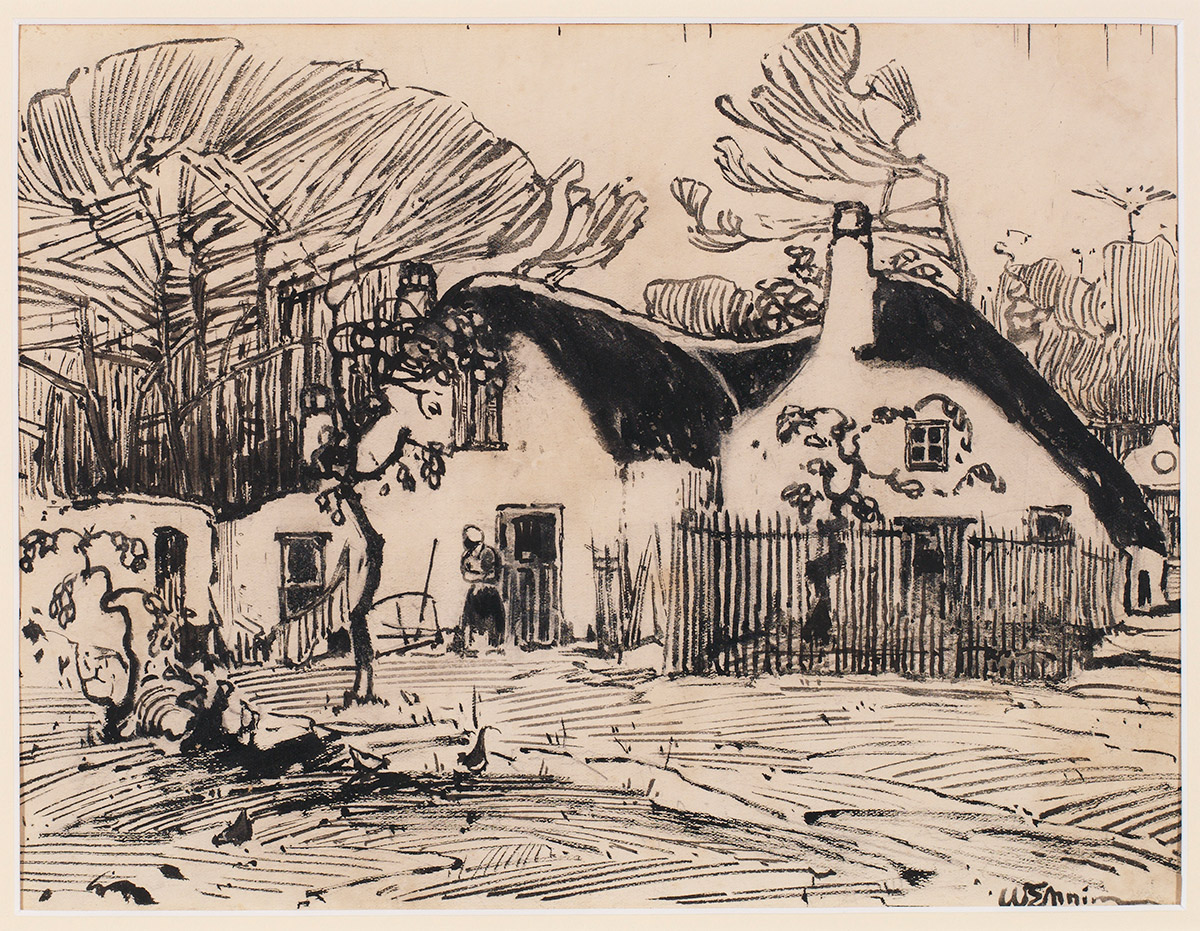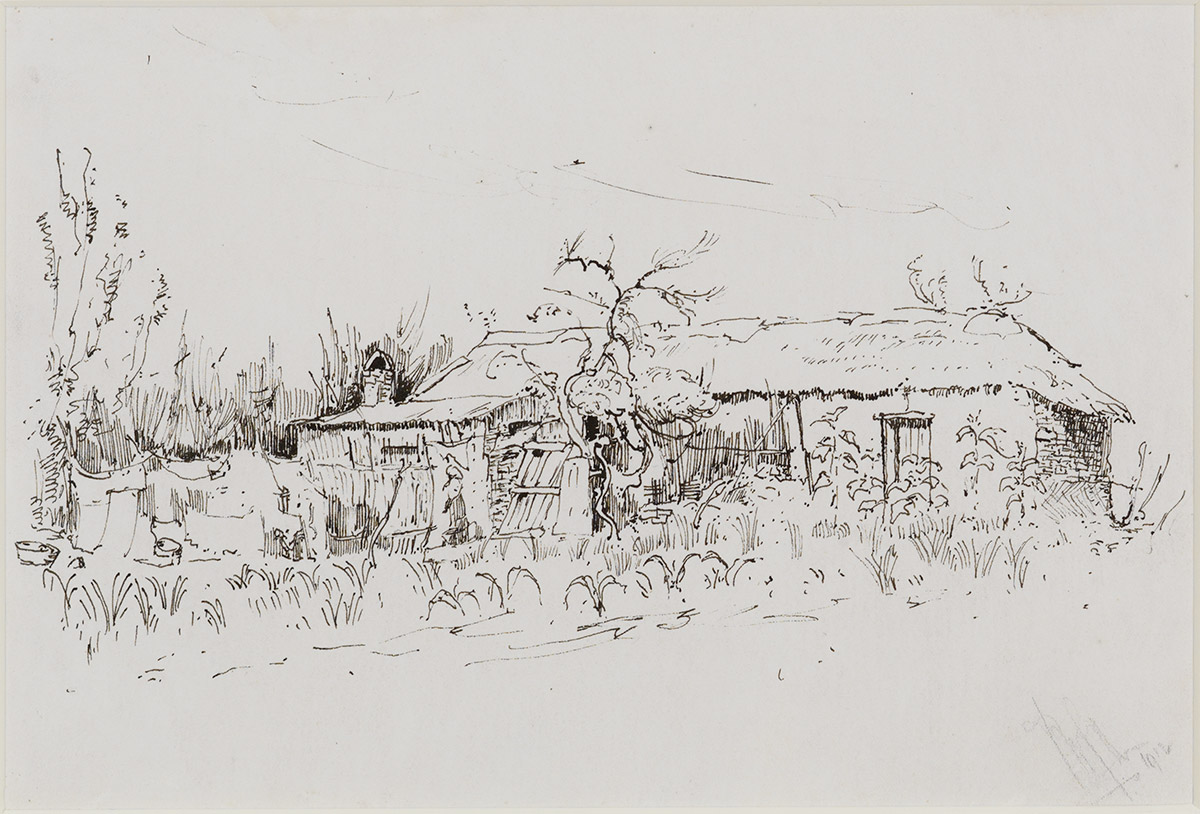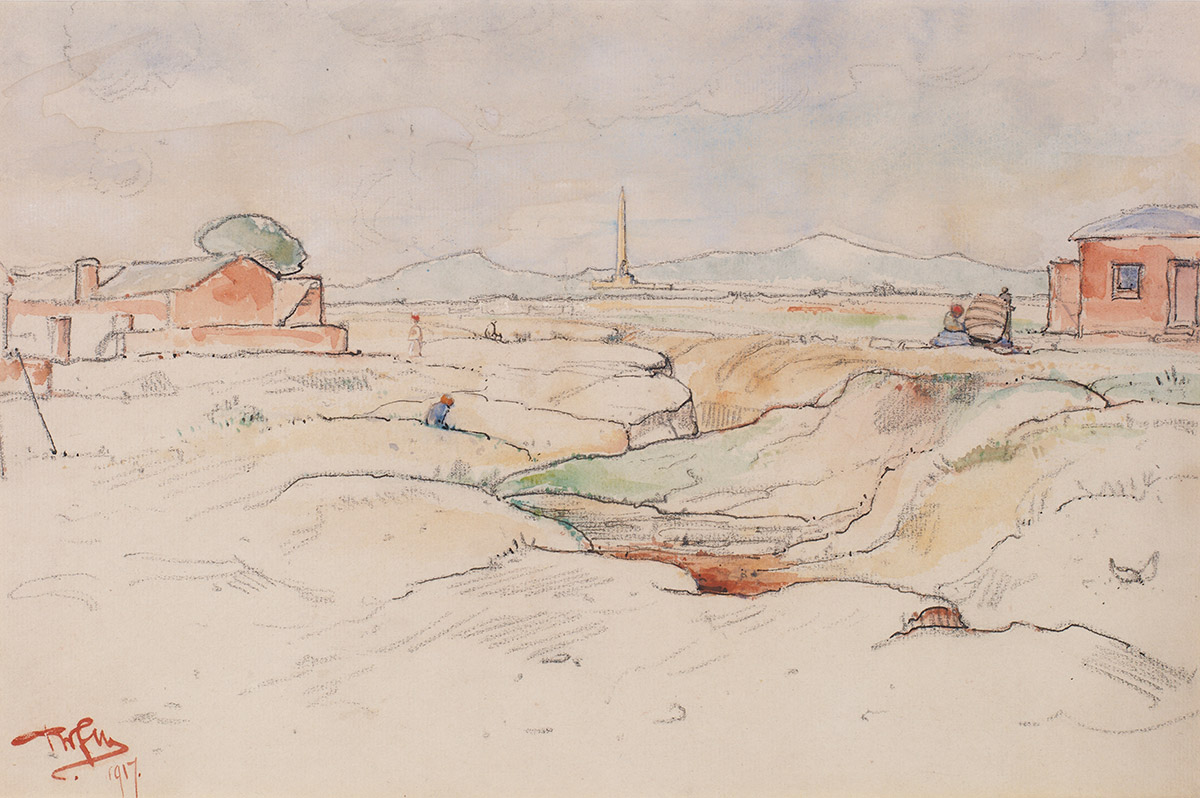Pieter Willem Frederik WENNING (1873 – 1921)
BIOGRAPHY
Pieter Willem Frederick Wenning was a South African painter and etcher, considered to be the progenitor of the style of Cape Impressionism.
He was born in The Hague in the Netherlands. His father owned a shop where he dealt in artists’ materials, pictures and prints, and he had a cousin who was a well-known Frisian painter, which brought him into contact with painting at an early age.
Despite his clear artistic talent, his parents steered him towards a position at the headquarters of the Hollandsch Ijzeren Spoorweg Maatschappij in Amsterdam, where he gained rapid promotion and was transferred to an administrative post in Zaandam. His sympathies with the plight of the Dutch poor became his undoing, when, in 1903, he participated in a general strike in solidarity with blue-collar railroad workers. The strike was suppressed and he was summarily dismissed.
When the offer came of a position as a clerk in a bookshop in Pretoria, Wenning leapt at the opportunity and he and his family sailed from London, arriving in Cape Town in 1905. From there they sailed to Durban and travelled to Pretoria by rail.
Wenning and his family lived in a wood and iron cottage in Rietfontein on the outskirts of Pretoria. He sold books, stationery, prints and artist’s materials, earning £17 a month. Unable to afford the materials for painting, he drew incessantly and, through diligent saving, eventually imported a second-hand etching press from the Netherlands, with which he became a pioneer in etching in South Africa. It was also at Rietfontein that Wenning began experimenting with oils.
After four years in Rietfontein, Wenning was able to rent a property in Rissik Street, Pretoria. It was shortly after this that he contracted malaria. He recovered, but would suffer the consequences for the rest of his life.
Through the bookshop, Wenning became acquainted with a number of Pretoria personalities, who decided to form a society they called The Individualists. Pierneef and George Smithard were also founding members. The group held their first exhibition in 1911.
Although he had settled in the then Transvaal, Wenning travelled all over South Africa and developed a special liking for the Cape; which became the subject of most of his paintings.
In 1916, he moved to the Cape, became a full time painter and started working on his first solo exhibition.
Wenning’s bold impasto brushstrokes and controlled and sensitive handling of colour led to him achieving master status in painting. Most of the farms and old buildings that are depicted in his paintings are long since gone, but people today can get a glimpse of what they looked like through Wenning’s depictions of them.




